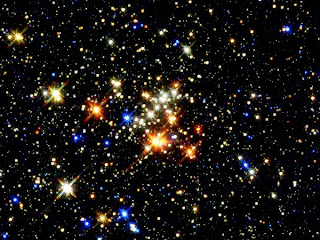मंगलग्रह
Mars in 1980 as seen by the Viking 1 Orbiter
|
||||||||||
Designations
|
||||||||||
|---|---|---|---|---|---|---|---|---|---|---|
| Pronunciation | Listenˈmɑrz/ | |||||||||
| Adjective | Martian | |||||||||
Orbital characteristics
|
||||||||||
| Epoch J2000 | ||||||||||
| Aphelion | 249,209,300 km 1.665 861 AU |
|||||||||
| Perihelion | 206,669,000 km 1.381 497 AU |
|||||||||
| Semi-major axis | 227,939,100 km 1.523 679 AU |
|||||||||
| Eccentricity | 0.093 315 | |||||||||
| परिभ्रमण अवधि | 686.971 days 1.8808 Julian years 668.5991 sols |
|||||||||
| परिभ्रमण अवधि | 779.96 days 2.135 Julian years |
|||||||||
| परिभ्रमण गति | 24.077 km/s | |||||||||
| Mean anomaly | 19.3564° | |||||||||
| Inclination | 1.850° to ecliptic 5.65° to Sun's equator 1.67° to invariable planet |
|||||||||
| Longitude of ascending node | 49.562° | |||||||||
| Argument of perihelion | 286.537° | |||||||||
| उपग्रह | 2 | |||||||||
Physical characteristics
|
||||||||||
| भूमध्यरेखीय अर्धब्यास | 3,396.2 ± 0.1 km 0.533 Earths |
|||||||||
| ध्रुवीय अर्धब्यास | 3,376.2 ± 0.1 km 0.531 Earths |
|||||||||
| Flattening | 0.005 89 ± 0.000 15 | |||||||||
| सतहको क्षेत्रफल | 144,798,500 km2 0.284 Earths |
|||||||||
| आयतन | 1.6318×10११ km3 0.151 Earths |
|||||||||
| पिण्ड | 6.4185×10२३ kg 0.107 Earths |
|||||||||
| औशत घनत्व | 3.9335 ± 0.0004 g/cm³ | |||||||||
| Equatorial surface gravity | 3.711 m/s 0.376 g |
|||||||||
| Escape velocity | 5.027 km/s | |||||||||
| परिक्रमण अवधि | 1.025 957 day 24.622 9 h |
|||||||||
| Equatorial rotation velocity | ८६८.२२ km/h (२४१.१७ m/s) | |||||||||
| अक्षको झुकाव | 25.19° | |||||||||
| North pole right ascension | 21 h 10 min 44 s 317.681 43° |
|||||||||
| North pole declination | 52.886 50° | |||||||||
| Albedo | 0.170 (geometric) 0.25 (Bond) |
|||||||||
| Surface temp. Kelvin Celsius |
|
|||||||||
| Apparent magnitude | +1.6 to −3.0 | |||||||||
| Angular diameter | 3.5–25.1" | |||||||||
Atmosphere
|
||||||||||
| वायुमण्डलीय चाप | 0.636 (0.4–0.87) kPa | |||||||||
| वायुमण्डलीय तत्वहरू | (mole fractions) 95.32% carbon dioxide 2.7% nitrogen 1.6% argon 0.13% oxygen 0.08% carbon monoxide 210 ppm water vapor 100 ppm nitric oxide 15 ppm molecular hydrogen 2.5 ppm Neon 850 ppb HDO 300 ppb Krypton 130 ppb formaldehyde 80 ppb xenon 30 ppb ozone 18 ppb hydrogen peroxide 10 ppb methane |
|||||||||
रातो ग्रह भएकोले र रगतको रङ्ग रातो भएर, युरोपेलीहरुले मंगलग्रहलाई रोमाली युद्धदेवको नाम मार्स दिए ।
मंगलग्रहको दुइटा एकदम साना चन्द्रमा छन् । त्यसका नाम फोबस र डाइमस हुन् ।
मंगलग्रह ढुङ्गाबाट बनेको हो । ढुङ्गा र धुलोमा फलामको खैयो पाइएकोले, जमीन रातो देखिन्छ । ग्रहको कार्बन डाइयक्साइडबाट बनेको वायु-मण्डल बिरल छ । सूर्य्ाबाट टाढा भएकोले, मंगलग्रहको तापक्रम पृथ्वीको भन्दा धेरै जाँडो हुन्छ । मंगलको उत्तर र दक्षिण ध्रुवमा पानीको बरफ र कार्बन डायोक्साइडको बरफ पनि पाइन्छ ।
आजभोली ध्रुवमा बाहेक मंगलको सतहमा पानी पाइँदैन । धेरै वैज्ञानिकको विचारमा पानी पहिले पहिले पाइन्थ्यो । कति पानी पाइन्थ्यो, पानी कहिले बिलायो भनेर वैज्ञानिक पत्ता लगाउन खोज्दैन् । जमीनको मुनी पानी अझै भएको विश्वास कुनै वैज्ञानिकहरु गर्छन् ।
Because Mars is closest to the Earth in the Solar System, people have wondered if there was any kind of life on Mars.
Some famous stories were written about this idea. The writers used the name "Martians" for intelligent beings from Mars. In 1898 H. G. Wells wrote The War of the Worlds, a famous novel about Martians attacking the Earth. In 1938, Orson Welles broadcast a radio version of this story in the United States, र many people thought it was really happening र were very afraid. Beginning in 1912, Edgar Rice Burroughs wrote several novels about adventures on Mars.
As of November 2006, scientists still have not discovered proof of any life on Mars, either living now or extinct.
Several space probes without people have gone to Mars to study it. Some have orbited (gone around) the planet, र some have landed on it. We have pictures of the surface of Mars that were sent back to Earth by some of these probes.
Some people are interested in sending astronauts to visit Mars. This would be a difficult project, र the astronauts would have to stay away from Earth for several years.

टिप्पणियाँ
एक टिप्पणी भेजें